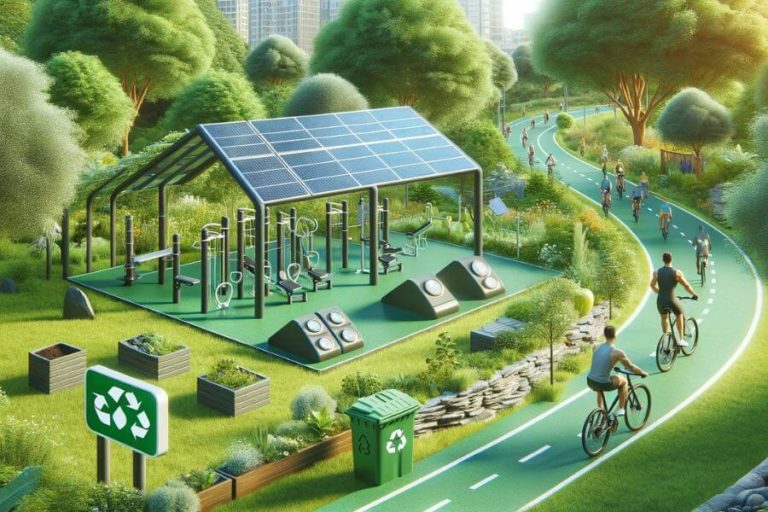Eco-Friendly Home: Simple Swaps to Reduce Your Carbon Footprint
Looking to reduce your carbon footprint and create a more eco-friendly home? This article will guide you through simple swaps that will make a big difference.
From energy-efficient lighting options to eco-friendly cleaning products, you’ll learn how to make sustainable choices in every aspect of your home.
Discover easy kitchen swaps, water conservation tips, and green transportation alternatives that will help you live a more environmentally conscious lifestyle.
Start making a positive impact today!
Energy-Efficient Lighting Options
You can easily reduce your energy consumption by switching to LED bulbs for your home lighting. LED stands for Light Emitting Diode, and these bulbs are much more energy-efficient compared to traditional incandescent bulbs.
LED bulbs use up to 80% less energy, which means lower electricity bills and a smaller carbon footprint. Not only do LED bulbs consume less energy, but they also last much longer. While traditional bulbs may last for around 1,000 hours, LED bulbs can last up to 50,000 hours.
This means fewer bulb replacements, less waste, and more savings in the long run. LED bulbs also emit less heat, making them safer to use and reducing the load on your air conditioning system. Additionally, LED bulbs come in a variety of colors and brightness levels, allowing you to create the perfect ambiance for each room in your home.
Eco-Friendly Cleaning Products
When it comes to cleaning, using green products can make a significant difference in minimizing environmental impact. You may not realize it, but traditional cleaning products often contain harmful chemicals that can pollute the air and water when they are used and disposed of. By making the switch to eco-friendly cleaning products, you can help protect the planet and create a healthier home environment for you and your family.
One of the easiest swaps you can make is switching to natural all-purpose cleaners. These cleaners are made from plant-based ingredients and do not contain any harsh chemicals. They are just as effective at cleaning as traditional cleaners, but without the negative environmental impact. You can find these cleaners in most grocery stores or make your own using simple ingredients like vinegar, lemon juice, and baking soda.
Another eco-friendly cleaning product to consider is laundry detergent. Traditional laundry detergents often contain phosphates and other harmful chemicals that can harm aquatic life when they enter water systems. Opting for a natural laundry detergent that is free of these chemicals can help reduce water pollution and protect ecosystems.
Lastly, when it comes to cleaning your dishes, using eco-friendly dish soap can make a big difference. Look for dish soaps that are biodegradable and free of synthetic fragrances and dyes. These soaps are gentle on the environment and can still effectively clean your dishes.
Sustainable Kitchen Swaps
Opt for sustainable kitchen swaps to make a positive impact on the environment. By making simple changes in your kitchen, you can reduce waste, conserve energy, and contribute to a greener planet.
Start by replacing single-use plastic bags with reusable ones. These bags are not only durable but also help reduce the amount of plastic waste that ends up in landfills and oceans.
Another easy swap is to switch from plastic wrap to beeswax wraps. These reusable wraps are made from natural materials and can be used to cover bowls, wrap sandwiches, or store leftovers.
When it comes to cooking, consider investing in a set of stainless steel or cast-iron pans instead of non-stick pans. Non-stick coatings can release harmful chemicals into the air when heated, which is not good for your health or the environment. Stainless steel and cast-iron pans are also more durable and can last a lifetime with proper care.
To further reduce waste, replace paper towels with reusable dishcloths or microfiber towels. These alternatives are just as effective at cleaning up spills and can be washed and reused over and over again.
Additionally, consider using a compost bin to dispose of food scraps instead of throwing them in the trash. Composting helps reduce methane emissions from landfills and creates nutrient-rich soil for your garden.
Water Conservation Tips
Using a low-flow showerhead can help conserve water and reduce your household’s water usage. When you switch to a low-flow showerhead, you will be amazed at how much water you can save without sacrificing your shower experience. These showerheads are designed to restrict the flow of water while still providing a satisfying shower. By reducing the amount of water used per minute, you can significantly cut down on your water consumption.
Not only will using a low-flow showerhead help you save water, but it will also reduce your water bill. With less water flowing through your shower, you will be using less hot water, which means lower energy costs to heat that water. This can lead to substantial savings over time.
Installing a low-flow showerhead is a simple and affordable swap that can make a big difference. The best part is that you can do it yourself without any professional help. Just unscrew your existing showerhead and replace it with the low-flow one. It’s as easy as that!
Green Transportation Alternatives
Carpooling with friends or coworkers is a cost-effective and convenient way to reduce vehicle emissions and alleviate traffic congestion. By sharing a ride, you can significantly decrease the number of cars on the road, which in turn reduces the amount of harmful pollutants released into the atmosphere. Plus, carpooling allows you to split the cost of fuel and parking, saving you money in the process.
Not only is carpooling beneficial for the environment and your wallet, but it also provides an opportunity for social interaction and bonding with your fellow passengers.
To make carpooling even more eco-friendly, consider choosing a carpool vehicle that is fuel-efficient or even electric. This way, you can further reduce your carbon footprint and contribute to a greener transportation system. Additionally, you can explore the option of carpooling apps or websites that connect you with individuals in your area who have similar commutes. These platforms make it easy to find carpool partners and coordinate schedules.
Conserving Water And Opting For Green Transportation Alternatives
In conclusion, making simple swaps in your home can greatly reduce your carbon footprint. By choosing energy-efficient lighting options and using eco-friendly cleaning products, you can minimize your impact on the environment.
Making sustainable swaps in your kitchen, such as using reusable containers and buying local, organic food, can also make a difference.
Additionally, conserving water and opting for green transportation alternatives can further contribute to a more eco-friendly lifestyle.
So start making these changes today and be a part of the solution!



